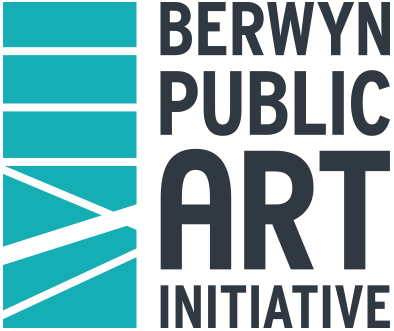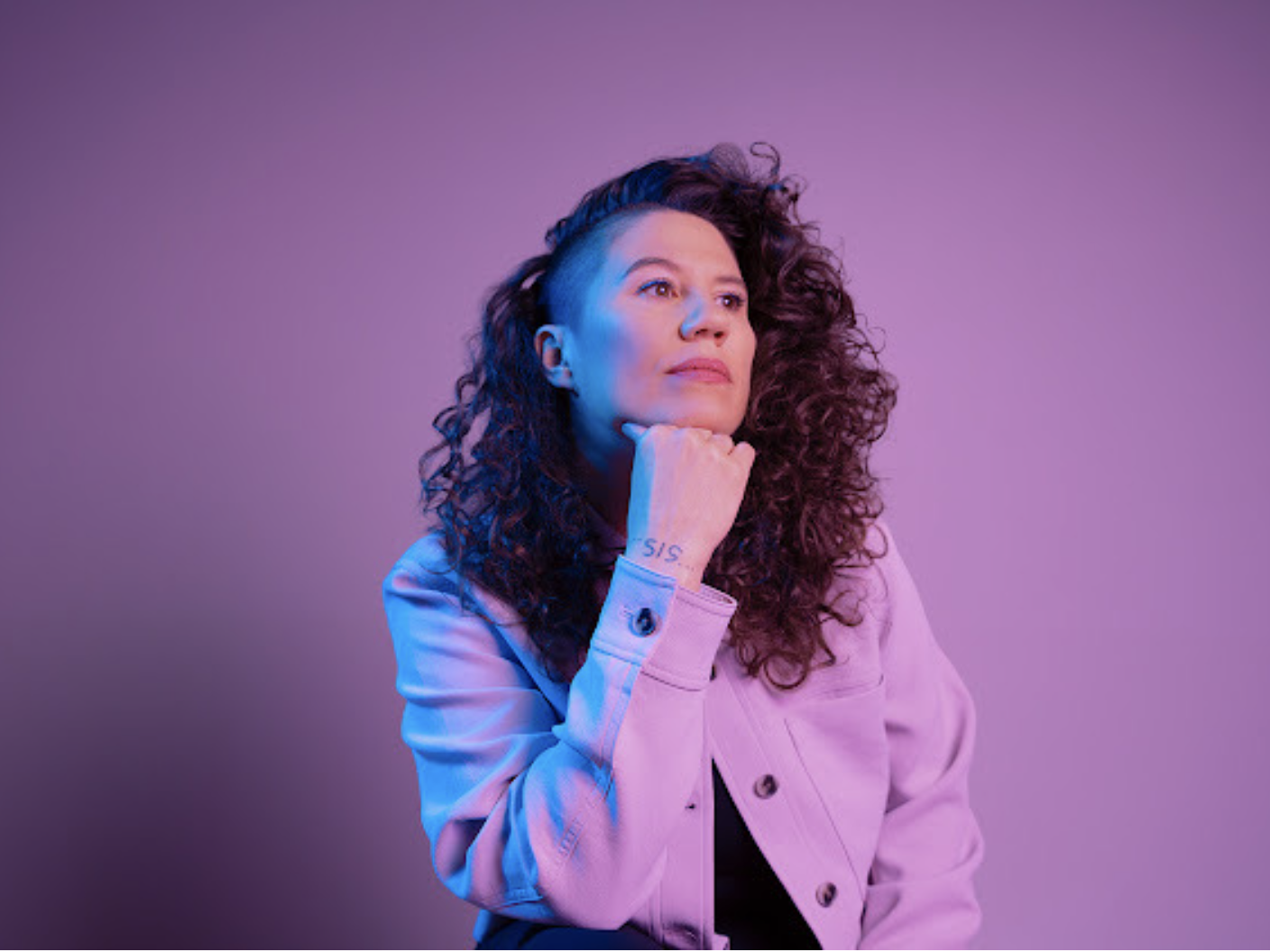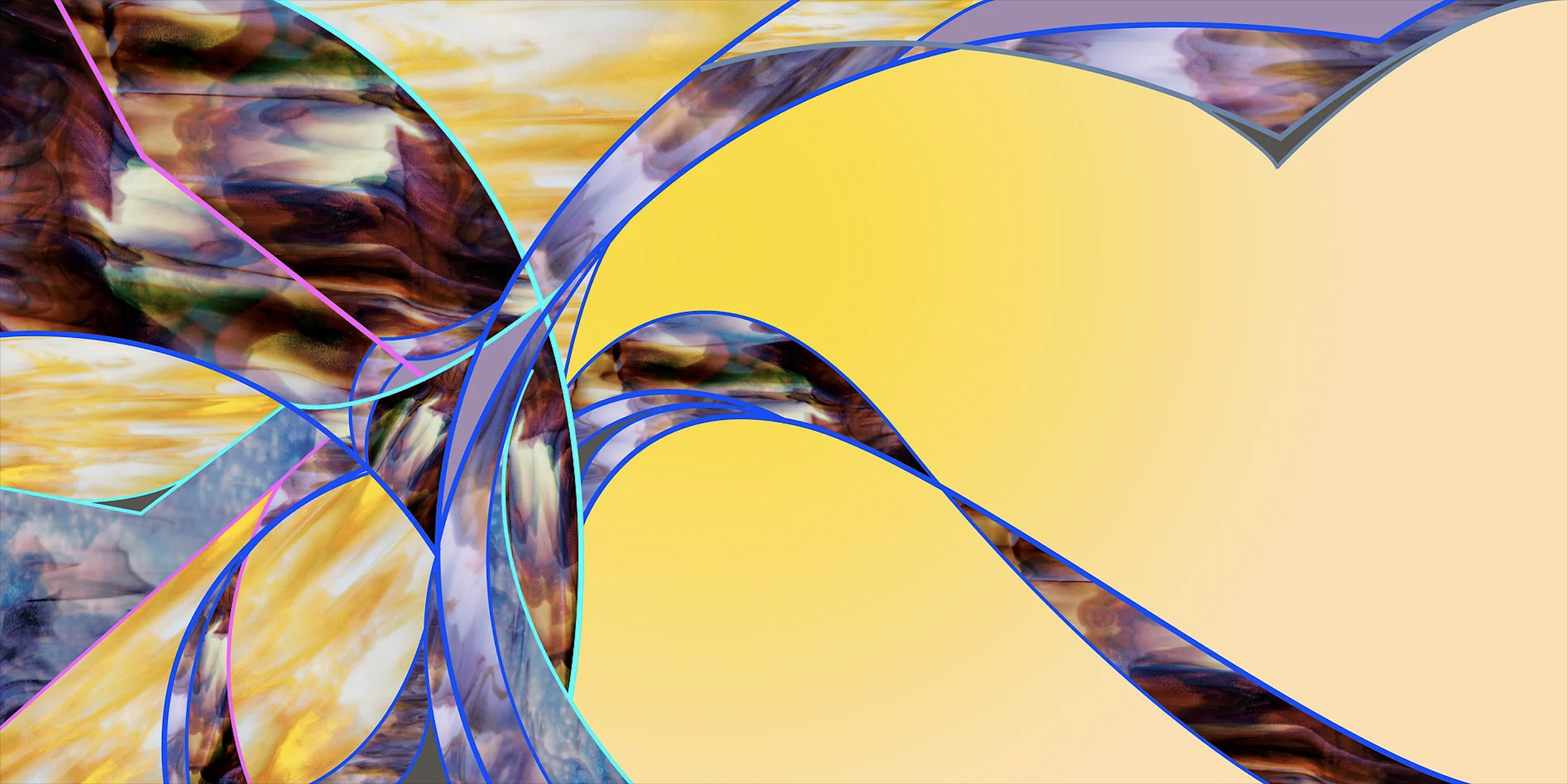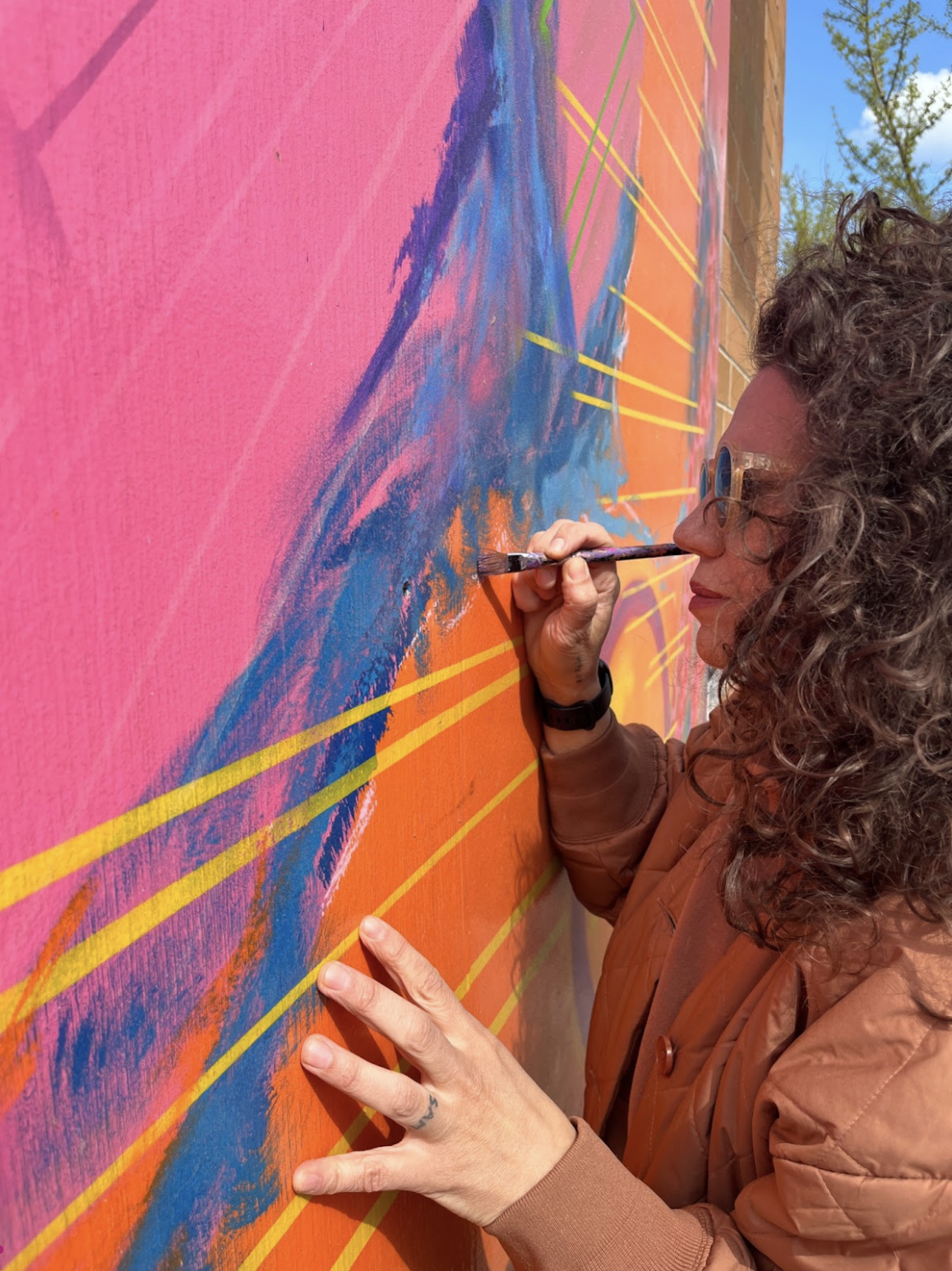Andy Bellomo
We are elated to highlight the work of Andy Bellomo, who is best known for her larger-than-life vibrant murals throughout Chicago. Her multifaceted practice currently encompasses digital, mural painting, fiber, and textiles. In addition, Andy folds in her Queer identity and lens into her work which is a vital element to her growing practice.
No matter which medium Andy is leading with, her line work, color interventions, and patterns are mesmerizing and joyful. She currently has multiple bodies of work that are continuously expanding, and Queer Mural Series is one of them. With a meaningful approach, Andy paints portraits of local advocates and artists within the Chicago LGBTQ+ community. Andy positions her subjects as the centerpiece within the composition, which serves as an entry point to their story and an invitation to honor and celebrate their contributions to the community. Her most recent installment from this series is titled Queer Love, and it was in partnership with Aritzia to celebrate Pride 2023.
“My creative process involved studying the relationships around me. I create work that visually emphasizes the importance of queer love. Queer Love has to be protected, held, cheered on, and supported.”
In addition to her Queer Mural series, Andy has an incredible Digital Glass series which evolved from her glasswork-making era initially inspired by church stained glass windows. We are thrilled to have a digital glass print in the Community Art Collection. You are welcome to view the entire digital collection here and pick one for your collection!
Andy Bellomo holds a Master’s Degree in Education in Creative Arts in Learning from Lesley University Cambridge, MA, and a Bachelor’s Degree of Science in Human Services, with a concentration in Education from Northeastern University, Boston, MA. To learn more about Andy Bellomo, read our interview below.
Artist Q&A
A conversation between Michelle Ruiz and Andy Bellomo
Michelle Ruiz: Tell us briefly about your background and what led you to the arts.
Andy Bellomo: I moved to Chicago from Boston in 2008 with the dream of becoming a professional artist. I don’t have a degree in Art and had no formal visual art training. Instead, I attended college and graduate school and studied education. I loved teaching and taught for 20 years, but felt a strong connection to art making and an urge to become a working artist and make my living as one. When I moved to Chicago, I was determined to find a way to make this happen. I taught for a few more years and then gradually moved into the life of a working artist. The Chicago art scene is filled with an amazing group of artists working in a variety of different media. I began to study the way artists were working and began to volunteer on murals, learning how to paint, design, fabricate, and install large-scale murals. I had a strong interest in line work, as I spent a lot of time being inspired by stained glass church windows as a teen. As a young person and a closeted queer person, it took me a while to realize I was uncomfortable with church, but a deep connection to stained glass art. Later on, as I continued my apprenticeship in murals, I slowly began to gain the experience I needed to develop and lead projects on my own. I took my experience studying stained glass and merged its use of line, pattern, and design into my practice incorporating that into mosaic murals. I developed my own unique style, creating movement and rhythm through lines, and evolved my artwork into a fresh flow that now extends beyond the medium of glasswork into abstract pieces, large-scale murals, and, more recently, working in fiber arts. I finally began to work full-time as an artist, leaving my teaching career behind, and have spent the last ten years creating large-scale murals, glass works, and sculptures and focusing on a studio practice. Today, things are a little different. I gave birth to my first and (will be my only child) at 42 in 2021 in the middle of the pandemic. Life changed drastically, and for the last two years, I have been reimagining what it means to be a working artist, mother, and community member. I balance caring for my toddler, working on murals, and maintaining a full studio practice. I’ve left the sharp, hard medium of stained glass behind and have begun to teach myself how to work in the softness of fiber and textiles. My studio work now consists of weaving, punch needling, tufting, and sewing. I’m currently developing fiber arts murals and large-scale weavings while still maintaining a mural arts and painting career. It’s a busy and hectic life now, but I’m gently figuring out how to create balanced, meaningful work while raising a compassionate and loving child.
MR: What are the centerstone themes or subjects that you bring forth in your studio practice and your public work?
AB: I strive to create work that means something to me and to my community. I’m interested in paying attention to the work being done in my community and highlighting the folks doing this work through visual art and murals. By creating larger-than-life artworks of artists and activists in the LGBTQ community, I am giving them the spotlight; I am lifting them up so that they may be recognized and seen by the larger world so that others will understand the impact these artists are making on all our lives. I need the essence of their work to be amplified so that it reaches masses of people. The work they are doing matters, and it is changing our world piece by piece.
Each time I create a piece of work, I aim to find a way to create a design that directs the viewer to not only think of something specific but also to feel something emotional. My artwork, whether it be murals, glassworks, or studio work, blends together my design sensibilities and the influence of queer culture, figuratively and abstractly highlighting the impact my community is making. It is within my designs that I am directly influenced by and rooted in my original connection (and disconnection) to stained glass in church spaces. I’ve spent time pushing my style, transforming my design and art-making process into symbols that now hold space in both the queer community as well as the public sphere. As collaboration and community-building are important aspects of my practice, I often work with other artists on these murals and studio works. I am inspired and driven by the emotional impact other artists have on me and channel that directly into my Queer Mural Series, which highlights the work of artists and activists in the Chicago LGBTQ community through portraiture. The collaborative aspect of my work aims to decenter myself in art making and join forces, merge ideas, and blend skills to enhance the mission of the piece we are working on and, in turn, give this energy to the larger community. My goal is to make work that lifts up and pays close attention to the living art heroes in our queer community in Chicago.
MR: What projects or bodies of work are you excited about or working on at the moment?
AB: I’m currently working on a series of tapestries that tells the story of my experience giving birth and then suffering from three life-threatening postpartum hemorrhages. The work is told through the lens of my queer identity as I share my story of becoming pregnant, giving birth, and then the trauma that followed the birth. For the artworks, I am weaving, tufting, punching, and sewing large scale abstract and figurative tapestries that will hang in sequence to tell the story while letting the viewer see and feel the details of this experience. I’m excited to finally have the time to work through this and with this new medium. It’s been an inspiring and healing process for me so far. I’ll be exhibiting the work in 2024 and look forward to sharing this with my community, friends, and family.
MR: Do you accept commissions within your multifaceted art practice?
AB: Yes, I accept commissions for murals, paintings, and weavings currently.
MR: We are excited to feature a framed print from your Digital Glass series. This is a stunning extension of your glasswork. Can you tell us more about this series and what inspired it?
AB: The Digital Glass series was inspired by many years of work in creating stained glass artworks. After seven years of working in stained glass, I developed some health issues due to the soldering portion of the work. I wanted to continue the work in some way, so I decided to let my designs of the stained glass artworks come to life through print! The Digital Glass series became a more accessible way for people to experience my work, and it helped me to continue to create this series in print as I was healing from the health issues of creating the actual glass pieces. The series now contains ten prints that are available for sale and are near and dear to my heart.
MR: You have many vibrant murals installed in various parts of the city. Is there a favorite you would like to highlight for us?
AB: My favorite murals include “The Love I Vibrate,” “Queer Love,” and “The Faint of Heart,” an abstract mural in Uptown that merges the LGBTQ flags together into an abstract design.



